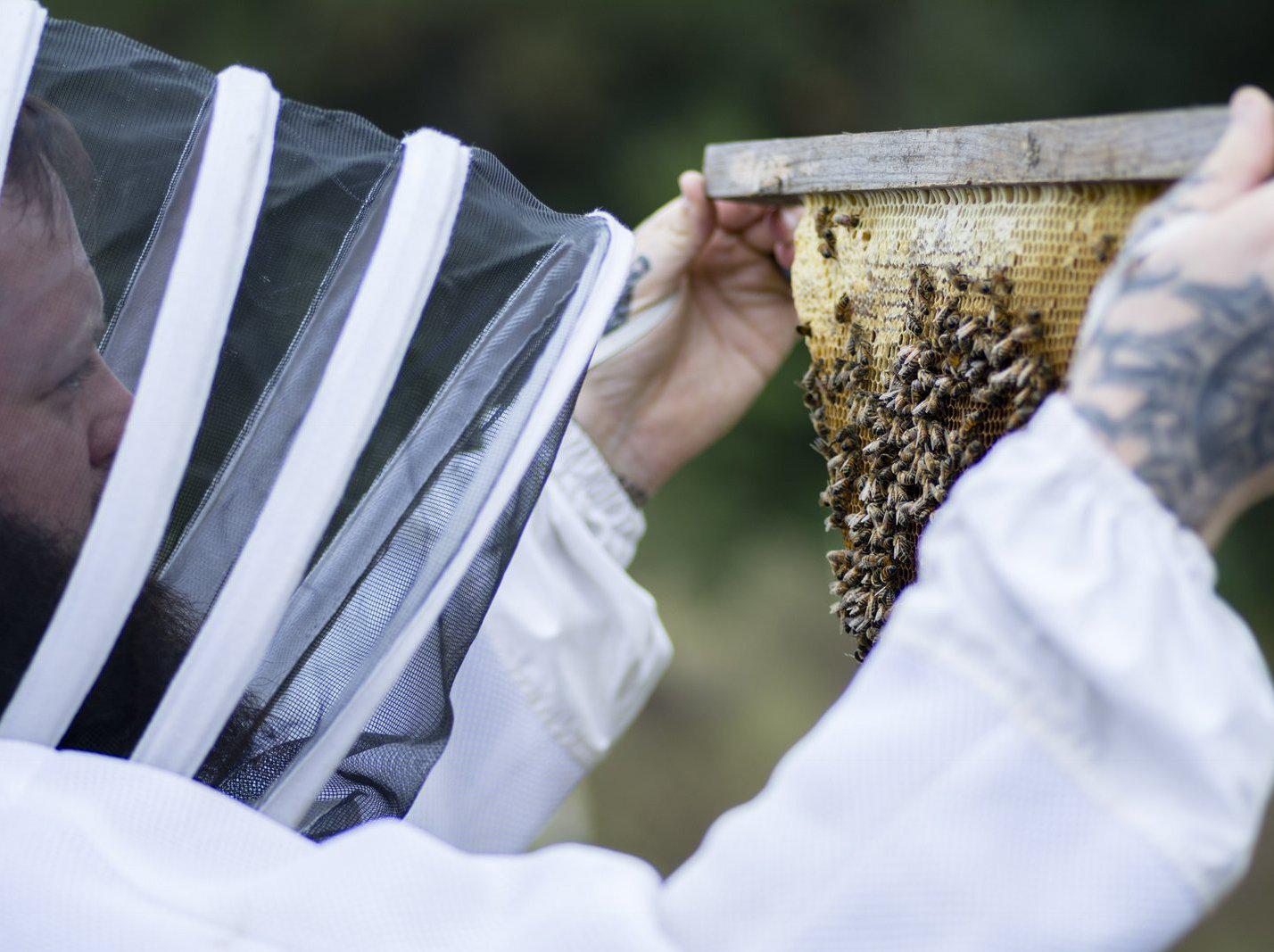
Please help us welcome Aaron Jennings of Jennings Apiaries this week as our guest contributor! We are honored to be working with Aaron and so excited to learn more about the art of beekeeping!
Five Fun Facts About Bees & Honey with Aaron Jennings
No. 1 - Girl Power
Worker bees make up the vast majority of honeybees in a colony. They are all females and take care of all the activities inside a colony. As they get older they take on different roles. They start off as nurse bees, taking care of the larva and developing bees. Some will become part of the Queen's attendants for short time.
Then they become housekeeping bees and take care of receiving nectar and pollen from foragers and placing it inside the comb for later use. Next, they become house cleaners and remove debris and dead bees from the hive. Just before they venture out and become foragers they act as guardians at the entrance of the hive. Finally, when the time is right, the older workers start foraging for nectar, pollen, water, propolis and other minerals that the colony needs to thrive.
If you've ever been stung by a bee, it was a girl that did it.

No. 2 - A Drone’s Life
Drones are the males. They develop from unfertilized eggs, meaning that they only contain genetics from their mother and have no father, although they will become a father.
Drones would seem to be living the life. They don't forage or work inside the colony. They fly out everyday and congregate waiting for virgin queens to swing by. Inside the colony, they are fed and provided for without having to do any of the labor to make those resources available.
Usually, at this point, some guy will say, “That sounds amazing! I want to be a drone.” Not so fast, there is a catch. Just like the worker's stinger that comes off when they sting, the drone's bits detach after he has mated, killing him in the process. If he doesn't mate, the workers will expel the drones from the hive when resources are tight and allow them to die from exposure or starvation. Not quite as carefree as it first appears.

No. 3 - Mother is the New Queen
The queen bee is not the ruler of a colony. In fact, she is better thought of as the reproductive part of the hive. Her purpose in life is to lay as many eggs as the colony can raise so that a new generation of bees can be born. After mating with a dozen or so males, she returns to the colony and begins laying eggs.
So why is she called a queen bee anyways? The term queen bee was actually coined by a European beekeeper in the 16th century. Up until that point the queen, because she is the largest bee, was assumed to be the King Bee. After an observant beekeeper noticed the “King” bee laying an egg, he knew that she indeed was the Queen Bee and that term has stuck into modern times.
Research has shown that she doesn't actually make any decisions and is more of a servant to the colony of workers. When she doesn't perform they will raise a new queen and bump the old one out. It is more appropriate to call her the Mother Bee, as she is the mother of all the bees living inside a colony. So maybe being the queen bee isn’t what it’s cracked up to be.
Click on the video below to see the Queen Bee in action!
No. 4 - Honey for Health
Honey is an amazing natural product. Because of it’s low moisture content and high acidity, along with some enzymes, nothing can grow in honey. This means that honey can last practically forever and still be edible.
Honey that was found in King Tut’s tomb after 2000 years was still edible. (I don’t think I would have been the first to try it, though.) Not only does honey taste good and last forever when properly sealed, it is also an amazing product for cuts, scrapes, minor burns, and general skin health.
Long revered in most cultures, honey has amazing antibacterial and antimicrobial properties. Raw honey can be placed onto a cut and covered with a bandage to aid in the healing process. There are even hospitals that use certain types of honey on medical bandages, especially on burn victims.
Since honey is slightly acidic, it can also be used a mask on the face to remove dead skin cells and hydrate the skin naturally. It can easily be washed off with warm water, making it a simple and perfect solution for pampering yourself.

No. 5 - Seeing the Light
Honeybees are often called creatures of the Sun. This dates back to ancient Egypt where honeybees were believed to be the tears from the sun god, Ra.
Honeybees get started working at first light and don’t stop until after sunset. They even have a third eye on top of their head, the ocelli. This simple eye detects UV rays and makes it so that the bees can navigate even when the sun isn’t visible because of clouds or haze.
They use the location of the sun as a reference point when telling their hive mates about the location of good forage or a new home. It has even been shown that they use the Sun’s movement to tell time and distance during the waggle dance. Not bad for an animal with a brain 20,000 times smaller than a human.







